Overseas Koreans Platform
- Main page
- Overseas Koreans Platform
- News Room
News Room
- Main page
- Overseas Koreans Platform
- News Room
- Country
- United States
- Date
- 2022.12.08
"I believe the branding of Korean liquor is my destiny."
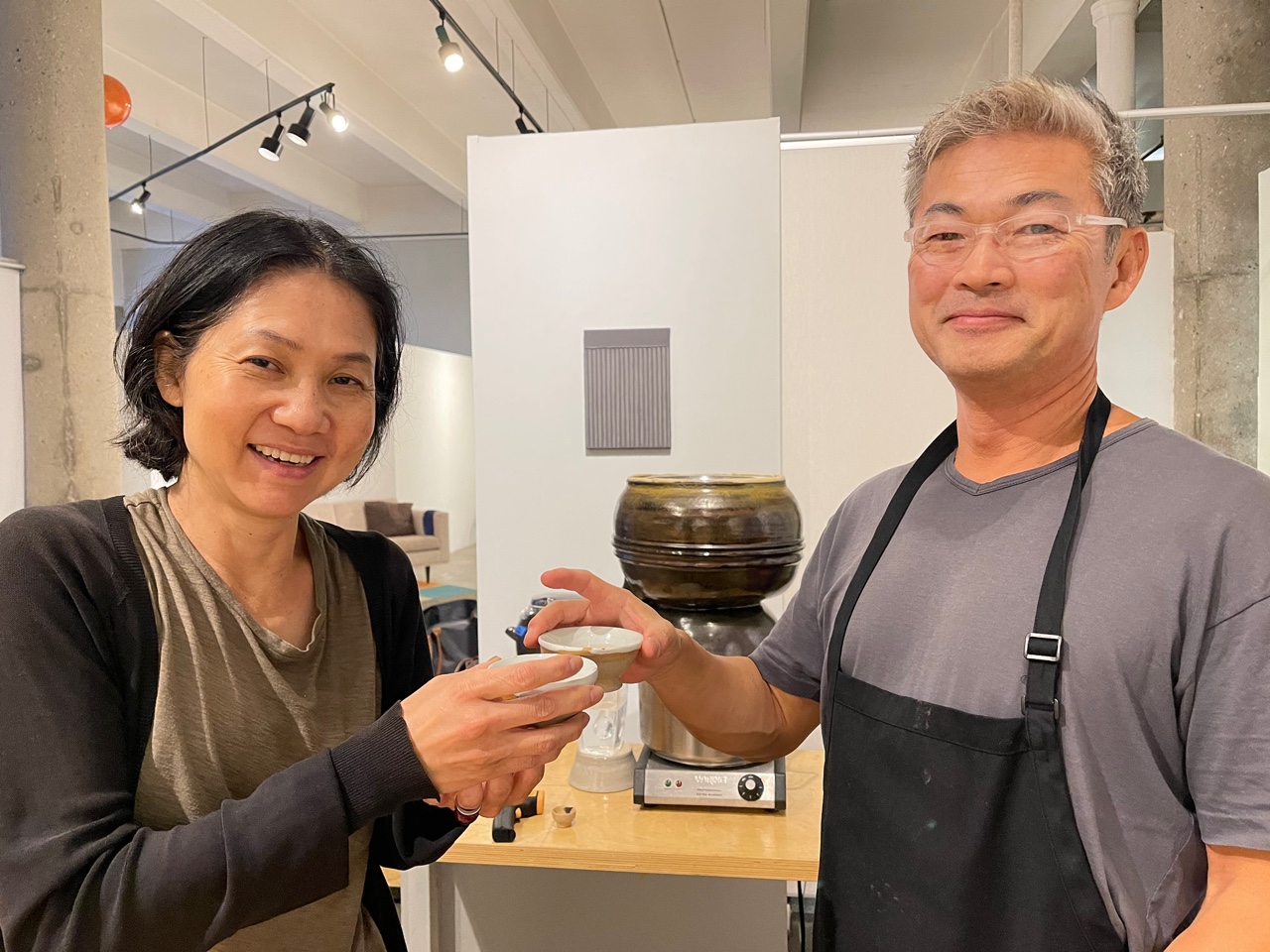
Q. Tell us about the California Suul Institute.
- It is a private academic organization in the United States established to promote the elegant and marvelous home-brewed liquor culture of Korea. The headquarters is in Samcheong-dong, Seoul. (www.suul.org) Our major projects include implementing localization strategies for various Korean drinks, publications, holding international liquor symposiums, spreading home-brewing culture, studying brewing technology, and improving drinking culture.
Q. Having the word ‘Suul’ in the institute name sounds familiar and strange at the same time. Is there a reason you used that word instead of just using ‘California Rice Wine?’
- Of course. Our drinks don’t have names. We might call them ‘suul’ in Korean, but those who don’t speak our language wouldn’t have a clue when they hear the word. ‘Korean wine’ wouldn’t be the right term, and ‘Korean sake’ would certainly be worse. That’s why we should just call it as ‘suul,’ as it is the Korean word for liquor. The right way would be to call ‘Takju’ as unfiltered Korean suul, ‘Cheongju’ as Korean Suul, and ‘Soju’ as distilled Korean suul. And for diluted soju, they can be called as ‘blended Korean suul.’
Q. The whole world is in awe of the diversity and depth of our food culture. But compared to our food, it seems we have only soju, the chemical compound drink, to offer as a widely known liquor with our appetizing dishes.
- That is correct. Korean liquor has stayed dormant for 100 years. A century ago, we lost our nation. The Japanese imperialists came to our land and took everything we had while also preventing us from doing anything. In particular, brewers get really worked up when the Japanese colonial times come up. That was the time when our drinks faded away.
But if you think about for a moment, it’s not completely the fault of the Japanese. After those times, everything became industrialized. It has been only 100 years since we started to eat food from factories instead of our homes. Since then, science started to play a part in food. The same was for liquor. Mass manufacture became the norm for drinks as well. You won’t get a huge batch out of the method used at the California Suul Institute. We only make a few because the leftover drinks won’t taste good if they don’t get sold. If you want to make a lot of drinks at once, you would need a recipe that would secure a good taste. To do that, you would have to use standardized yeast. Around 120 years ago, the Japanese became the first to look into their microscope and found out that the yeast was in charge of making alcohol and classified their types. We didn’t have the time to do that. Our whole nation was about to be taken over, so who would pay attention to yeast?
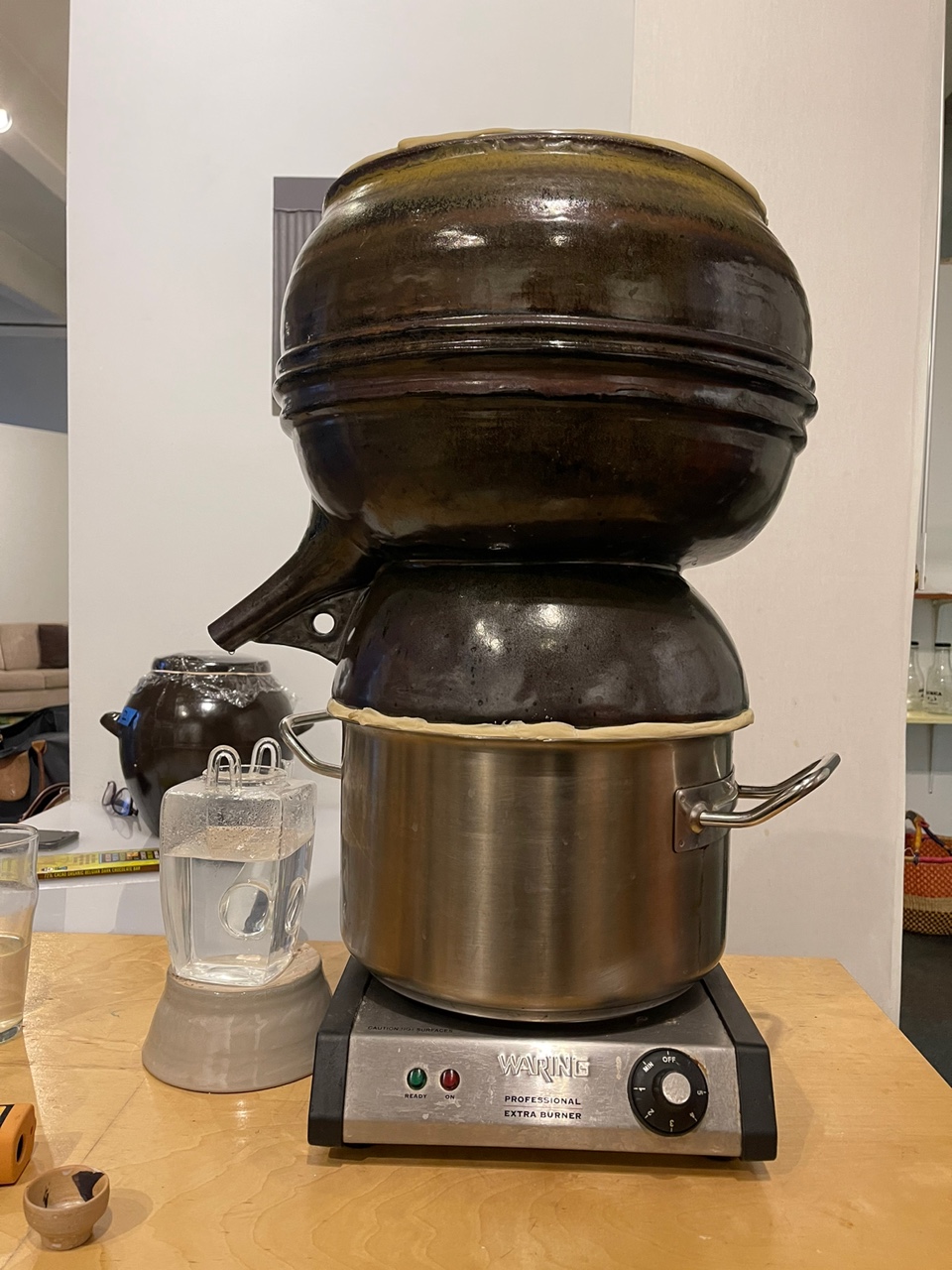
Q. So, does that mean the standardization of yeast was the reason the specialty and diversity in our drinks disappeared?
- That’s right. We used to have a lot of good drinks. It is said we learned distillation from the Mongolians, and that was back in the Goryeo dynasty. When I went to the Jang Bogo Museum, I saw a small cup that had a size of a soju glass. What would our ancestors have drunk with that cup? I personally think that our people started to brew and drink spirits from the Silla dynasty. Even the Mexicans brewed and drank tequila 3,000 years ago. Don’t you think it’s weird that the highly developed people of ancient Korea learned distillation from Mongolians? It just doesn’t make sense.
We call the drink for our ancestral rite as ‘Jeongjong,’ don’t we? But that is the name we should never use for Korean liquor. That is because Jeongjong is a refined rice wine brand from Japan. It is a brand from a Japanese refined rice wine factory that was established in Busan in the 1890s. The drink is factory-made. But it tasted great. That’s why the factory-manufactured drink became famous and spread across Korea, allowing Japanese sake to become our cheongju. The drinks from Korea, on the other hand, fell to being called the drinks from Joseon and became obsolete as traditional drinks. It’s our country, so why should we call our drinks ‘traditional?’ We should just call it ‘suul’ in Korean.
Who would brew their own drinks at home when they could get mass-produced Jeongjongs at a cheap price? The households back in the day wouldn’t have had the same level of making drinks. Just like how kimchi tastes good in some houses while others don’t, each family would have had different yeast and fermentation methods, which would have led drinks from some families to taste better than others. But the spirits that came out of the factory tasted good and were cheap, though they tasted all the same. That was when our brewing culture started to go downhill.
Q. Don’t you think the permit system for brewing and the change of taxation in the Japanese colonial period led to the stagnation of our liquor as well?
- That’s right. In this world, alcohol, cigarettes, and guns are all controlled by those with power and authority. That is why you have to pay tax to do work related to those things.
But Korea was a bit different compared to other countries when it came to brewing. Even when King Sejo in Joseon declared a prohibition on drinks, he allowed brewing drinks for farmers and soldiers.
As you can see, making liquor was just like making kimchi for our ancestors. Liquor was just a type of food you would cook and eat at home. The traces of such a culture can still be found in our language. When the husband comes home drunk in Korea, the wife would say, “you must have ‘ate’ alcohol.” To Koreans, liquor isn’t a drink, it’s a food they can eat. That’s why liquor is something you brew and eat at home, just like kimchi. The government wouldn’t force the people not to make kimchi, right? Because liquor was food for Koreans of the past, the central government never tried to have it under control.
But when the Japanese invaded us, they forced us to register and pay if we wanted to make drinks. Back in the Japanese colonial times, it is said the registration of brewers went over tens of thousands. This meant every house was a brewery.
Then they started to sell Jeongjong at cheap prices. Just like how we buy kimchi from supermarkets, the purchase of drinks became the reason our brewing culture started to slowly fade away.
Q. It feels as if our liquor never woke up from its slumber even though decades have passed since the Japanese colonial times.
- I completely agree. Currently, tax collected through liquor is managed by the National Tax Service. But why should food be controlled by the tax service? That should be the job for the Ministry of Food and Drug Safety. I think they all have the wrong idea.
Another problem is that there Korea still has a reverse discrimination against its own food. In Korea, even the expensive drinks have expiry dates. Do you think it’s reasonable for liquor to have those dates? Liquor is alcohol. Alcohol never goes stale. Fresh makgeolli that hasn’t been homogenized is the only thing that goes bad. Other drinks just turn into vinegar instead of going bad. The word ‘vinegar’ itself comes from ‘aged wine.’ Have a look around drinks from other countries. You should check if they have any expiry dates. You’ll find out Korea is the only country with them. Who would import alcohol with expiry dates? It’s just the same as telling foreign customers not to buy our drinks.
It seems the California Suul Institute could actually be free from the reverse discrimination of liquor in Korea.
- You couldn’t be more right. Because of the reverse discrimination in Korea, I believe we should start a Korean liquor independence movement here in LA. Historically, independence movements were all done in foreign soil. My idea is that we should brew liquor here and re-export them to Korea. That’s why I insist on establishing a brewery here in LA. I’m here to facilitate that movement. When we make our own liquor brand and re-export it to Korea, the people there would think, “Oh, cheongju from the US don’t have expiry dates, do they?” That will be the turning point for Korean alcohol system.
Q. What would be other factors that stopped Korean liquor’s development?
- Reverse discrimination isn’t the only reason. The problem of Korean liquor is that they’re too cheap. That’s why people don’t buy high-quality drinks with high prices that take a lot of effort to be made. Koreans would pay over 100 dollars to buy a bottle of wine, but they can’t spend the same for Korean spirits because soju is just too cheap. Another issue with this is that a lot of people become prone to alcohol abuse because the price of liquor is too low.
Q. You are a professor teaching branding at the Cal State University Long Beach. But it seems like you’re more busy with the California Suul Institute, brewing your own drinks.
- It took 100 years for sake to become the most famous drink from Asia. On the other hand, our liquor traditions have nearly faded away. We are only at the stage of rekindling its life. I think it would at least take a few decades for our liquor culture to be fully restored. Of course, I can’t do it alone. But I’m willing to be the person who builds the foothold and foundations for the glory of our liquor. Someone has to do that job.
I believe the branding of Korean liquor is my destiny. The project came to me out of the blue. I am a person with a career in branding, and Korean liquor is a branding project. After all, Liquor is just another merchandise. To sell a merchandise, a branding process must back up the process. Only about one out of ten has the ability to lead the trend, whether it be clothes, food, or music. The others just go along with what their peers like. All in all, they are persuaded by the power of brands. That is what Korean liquor needs right now- branding.
Q. The place where you are currently working, the Brewery Artist Loft, used to be a real brewery, right?
- That’s right. The building’s name has ‘brewery’ in it. This place used to be a beer brewery, and it was later renovated as a loft for artists. That is why there is a railroad right outside. The space that I’m in right now used to be a brewing room when the place was still a brewery. Stainless liquor jugs would have been placed here. It’s more than just a coincidence, I’d say.
Q. We can see you’re brewing as we speak. How many drinks have you brewed over the years?
- I started brewing ever since I got into the private organization called Korean Suul Institute, and I’ve washed and brewed one ton of rice every year. I believe there’s no individual who brewed more drinks than me. As Confucius said, “what is heard is forgotten, what is seen is rarely remembered, but what is learned through one’s body is never lost.” I repeated the brewing process countless times and mastered it with my body. It was literally a living practice for me.
Q. What kind of liquor do you brew at the California Suul Institute?
- The process of brewing relies heavily on nature. There are countless ways for us to brew drinks naturally. Out of all the projects being studied at the California Suul Institute, I’d like to recommend a few that could be easily recreated in common households, which are Triple Fermented Thai Sweet Rice Suul, Double Fermented Thai Wild Rice Suul, Triple Fermented American Sweet Rice Korean Suul, Single Fermented Unfiltered Korean Suul, Triple Fermented Mixed Sweet Rice Korean Suul, Triple Fermented Wild Rice Korean Suul, Single Fermented Unfiltered Korean Suul, and Double Fermented Unfiltered Korean Suul.
I make liquor by following the exact traditions of the Joseon dynasty. There are a lot of Korean alcohol recipes out there. But they’re written in old Korean dialects, so you have to ask the person who speak them to learn about the recipes. And I decoded all of them to brew drinks according to their instructions.
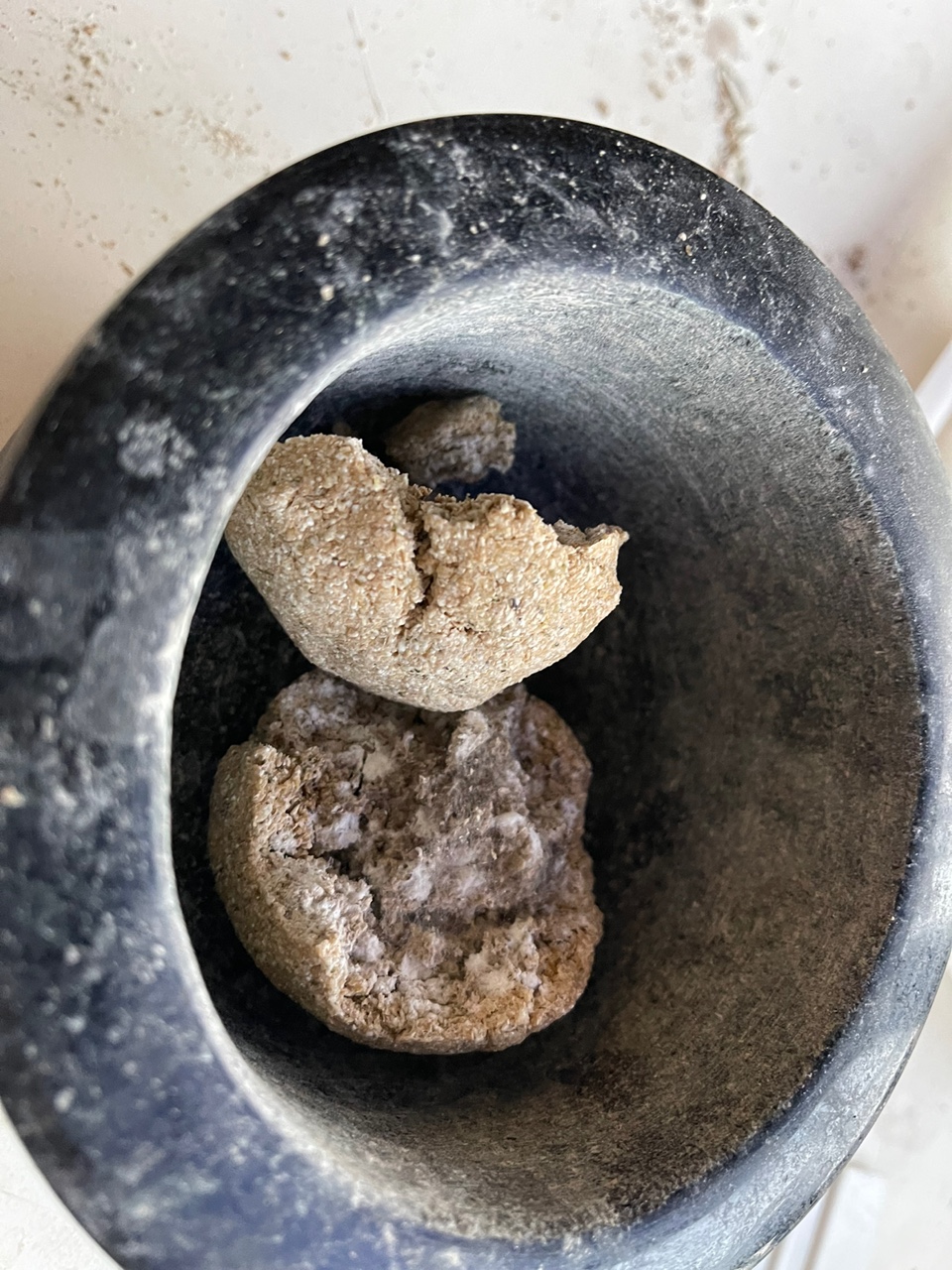
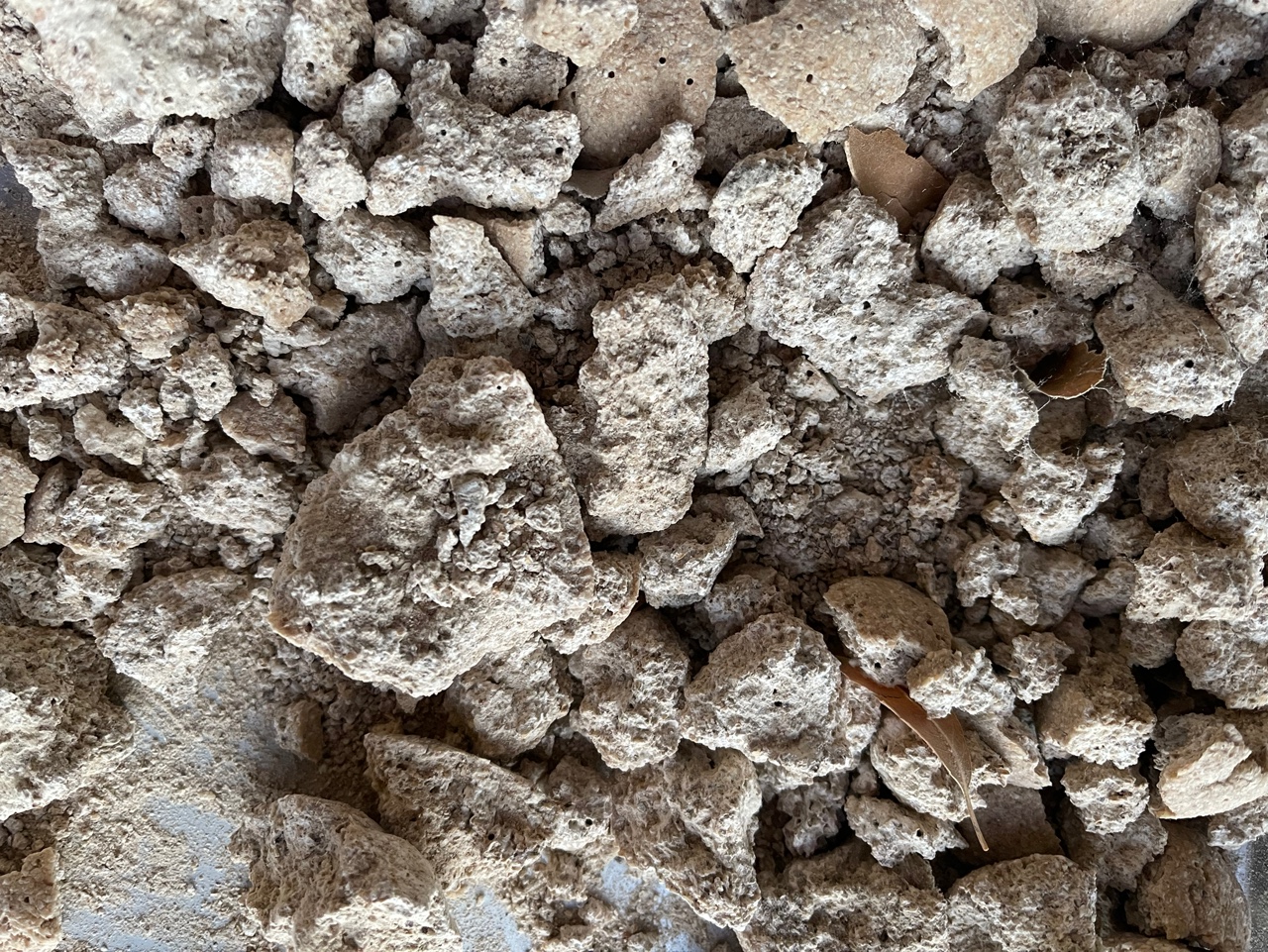
Q. Did you say you make your own yeast?
- Yes, I created my very own yeast room just to cultivate my yeast.
In Korea, even the most renowned Makgeolli artisans purchase yeasts instead of cultivating them. Yeast, rice, and water are the only ingredients for makgeolli, and if someone had to buy yeast to brew one, how could that person call this makgeolli his own? He isn’t a rice farmer, so he didn’t grow the rice, he certainly didn’t make water, and he didn’t even grow his own yeast.
That was why I cultivated my own yeast here. It took about a year and a half for me to find good yeast. Thanks to all the effort, I now have about 14 different types of yeast.
To grow yeast, I first raise the temperature with an electric pad and put a wide plate filled with water beneath it to find the right level of humidity. After that, I need a combination of herbal materials. In Korea, paper mulberry, lotus leaf, pine branch, and wormwood are usually used. Those plants all contain essential oils. They have them to keep the bugs away. I looked around in California to find the right substitute, and I found rosemary. That’s why I put rosemary inside for my yeast. When I mix the yeast into the rice and ferment it, the mixture turns into makgeolli. If I distill the mixture once more, it becomes cheongju.
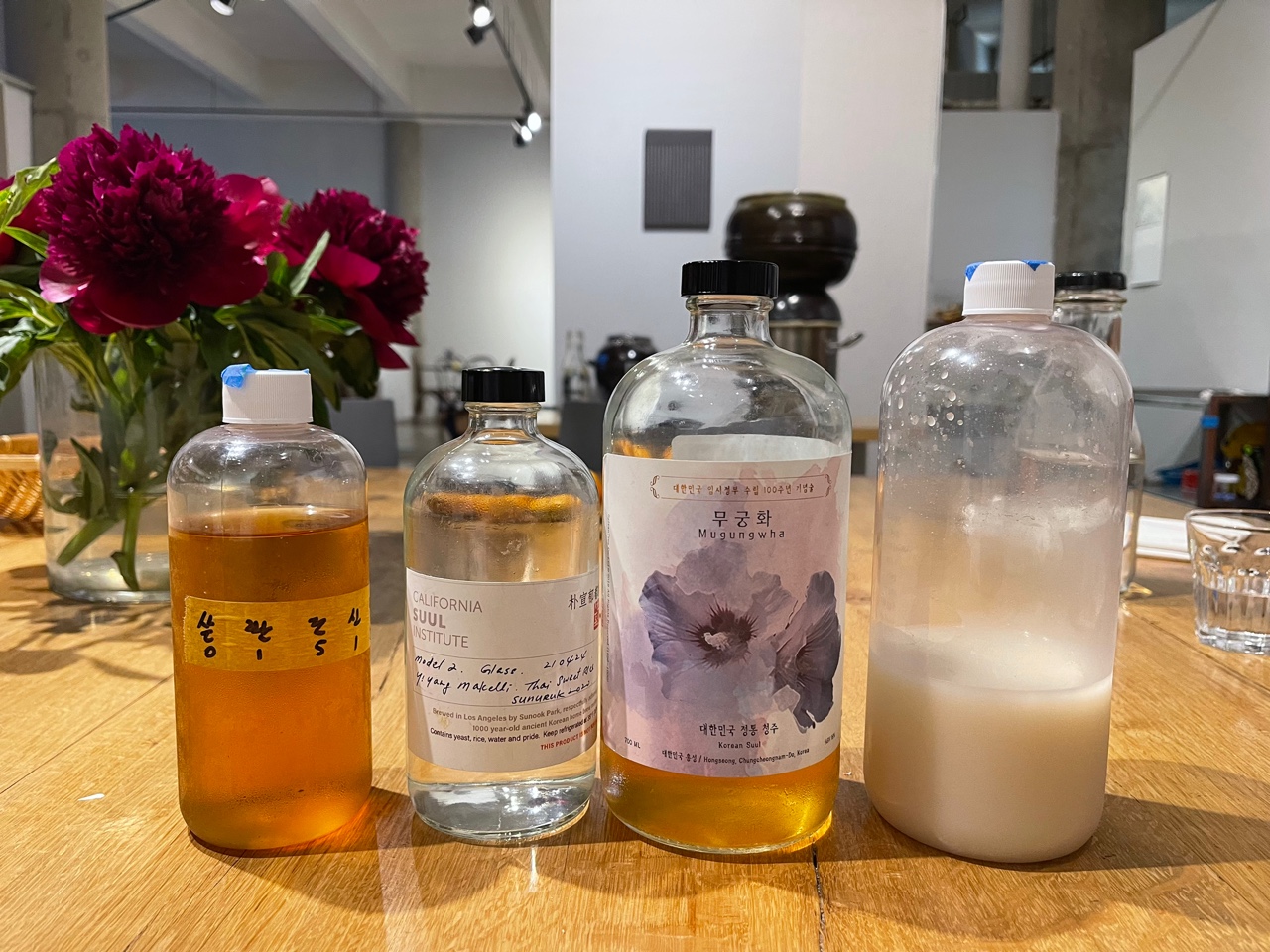
Q. You handed over a drink called ‘Mugunghwa.’ How do you brew this one?
- ‘Mugunghwa’ has a scent of butter, and resonates with the flavor of a real Chardonnay. It was made directly in Korea and was launched as a brand. Even the Blue House bought it. The package looks really nice too, right? A few years ago, I formed a team for the development of Korean liquor and created around 200 packages. We got some good designs out of them. I thought I would find use in the package designs some time. ‘Mugunghwa’ was indeed one of those packages.
Q. How many people visited the Korean Suul Brewing Workshop that was held by the California Suul Institute?
- Around 500 people made visits over the past five years. Last time, a woman’s organization of 40 members came in groups for five weeks. When they learn things here, they need to go back home and try brewing for themselves. But I found out that the number of people who put their body to work is below 10%. It’s a pity, really.

Q. We heard you wrote a book on liquor as well.
- The book is called Branding Korean Liquor, and I co-wrote it with Mrs. Lee Hwa-seon. We completed the book in two months with extreme focus. It was published by the Korea University Press. The book contains stories on how we should brand Korean liquor and profiling examples of liquor concepts, such as its packages and tastes, resembling the arrangements of concept cars.
Q. What future do you see in Korean liquor?
- Traditional Korean liquor is a treasure of the world, and an industry with enormous value and utility in modern society. The future looks bright for its globalization as well. That is because Korean liquor holds the culture and sentiment shared by all mankind.
